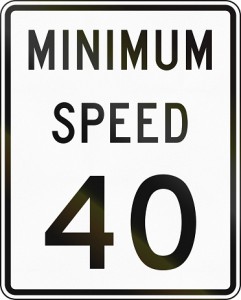For some of us, studying for our license was a months-long process with flash cards, color-coded highlighting, pop quizzes, and group study sessions. For the rest of us, it was more like a mad dash to the finish line after days of cramming. We’ve put together some of the lesser known Florida traffic laws that may surprise you.
- You must move over for tow trucks
We’ve all seen the signs on the highway urging us to move over for emergency vehicles. But did you know this law also extends to tow trucks that are responding to an accident or disabled car? Moving over a lane helps to ensure the safety of all people present at, or responding to, an emergency scene.
- Minimum speed limits are a real thing

You may think you are being extra safe by driving slowly on the highway, but minimum speed limits (just like maximums) are in place for the safety of all drivers. As a general rule, the minimum speed limit on most highways is 40 miles per hour. If the maximum speed is 70 miles per hour, the minimum increases to 50 miles per hour.
- You can’t drive with your hazard lights on
Contrary to popular belief, hazard lights are only to be used when your car is stopped. The intended purpose of these blinking lights is to help identify immobilized vehicles that may be obstructing traffic flow to approaching vehicles. Hazard lights are not to be used while your vehicle is moving for any reason- including heavy rain. If weather conditions become too intense or obstructive for your personal limitations, pull over to safety and wait it out- try to exit the highway entirely.
- You can make a right turn on a red arrow signal
Unless specifically notated with a “no turn on red arrow” sign at the intersection, you can make a right-hand turn on a red arrow traffic indicator. According to Florida traffic laws, a red arrow should be treated the same as a solid red light.
- You are able to make a left-hand turn on (some) red lights
This law is admittedly a little tricky. It is legal to make a left hand turn on a red light, but only if it is from a one-way street onto another one-way street, and if there isn’t a “no turn on red” sign present. This scenario is overly specific, so it’s probably best to err on the side of caution and keep your left turns standard.
- The vehicle on the right has the right of way
Four-way stops can be a little confusing when you factor in multiple lanes, heavy traffic, turn lanes, and rush hour. If you happen to be stuck on in a “who should go?” conundrum at a four-way stop, the simple way to solve this is look for the car on the right. If it’s you, it’s your turn; if it’s the other car, you’ll need to yield.

- Slow down at intersections and railroad crossings
According to Florida law, drivers must slow down to an appropriate speed when approaching and passing through an intersection or railroad crossing. Slowing down at intersections, even if you have a green light, is an important step in defensive driving. Driving at a reduced speed through an intersection improves your ability to spot and potentially avoid a collision due to driver error or mechanical malfunction.
- Funeral processions can go through red lights
While we already learned that driving with your hazard lights on in any scenario is against Florida law including funeral processions, you are able to go through a red light if are part of a procession with a police escort. However, it is still mandatory to yield to emergency vehicles.
How many of these lesser-known traffic laws did you know about?


Recent Comments